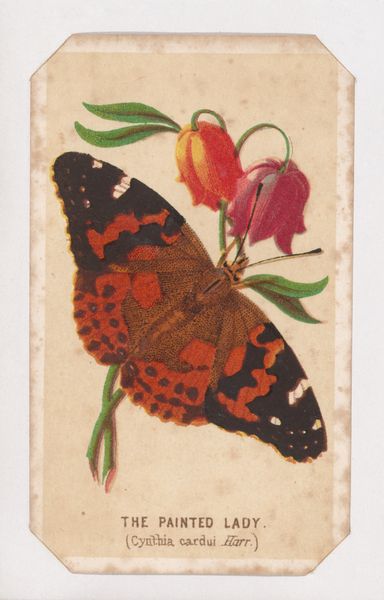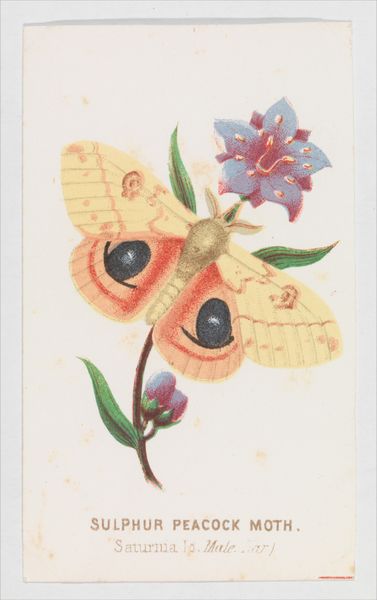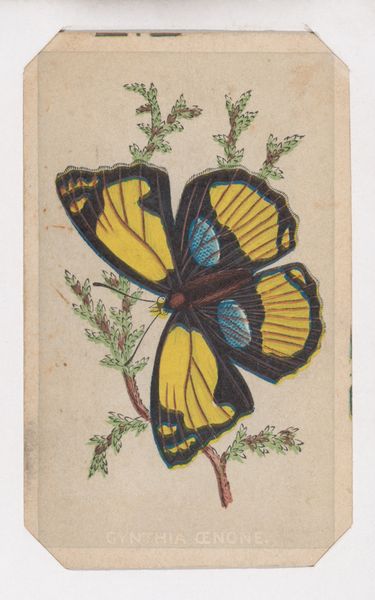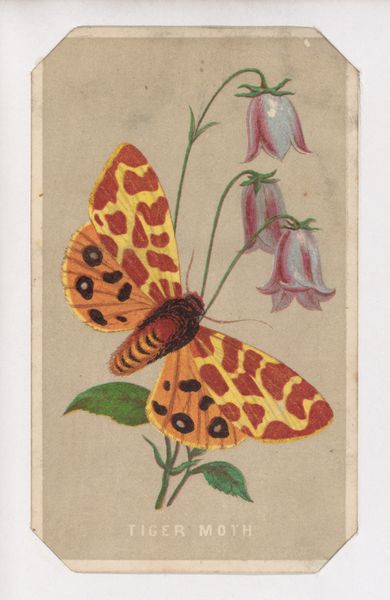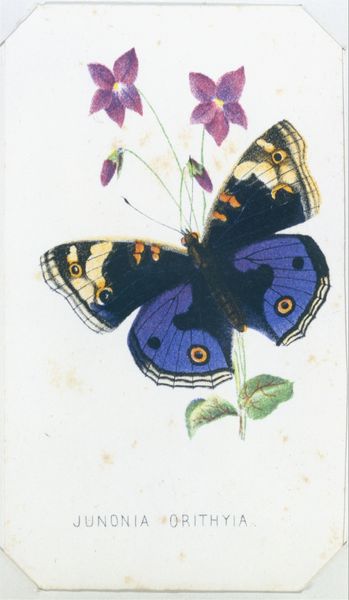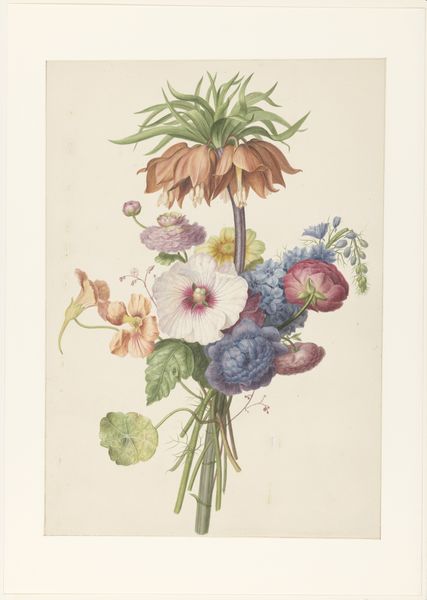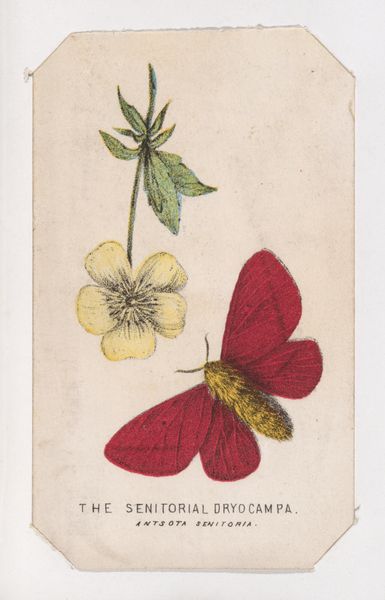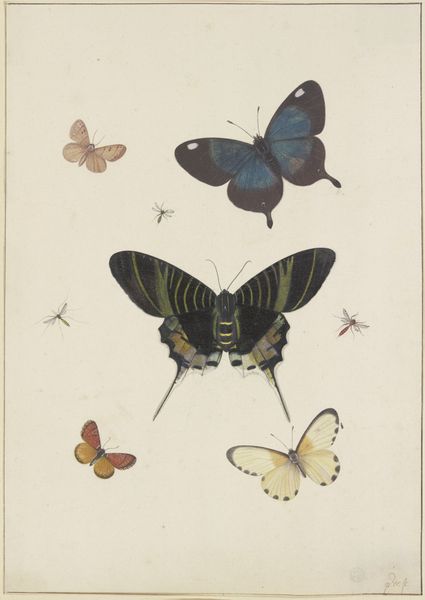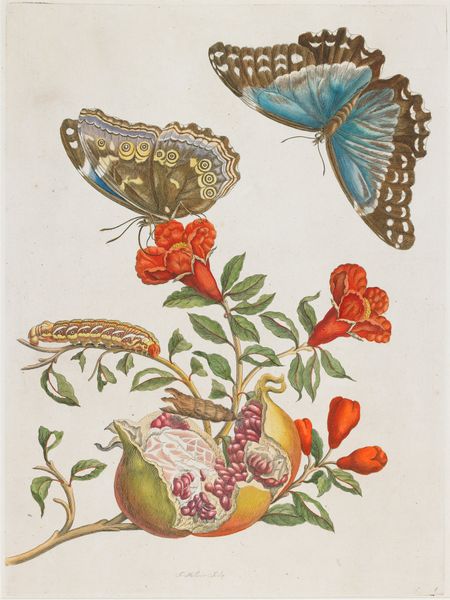
The Black-Banded Underwing from The Butterflies and Moths of America Part 2 1862
0:00
0:00
drawing, print, watercolor
#
drawing
#
water colours
# print
#
impressionism
#
ukiyo-e
#
watercolor
#
botanical art
Dimensions: Sheet: 4 1/8 x 2 1/2 in. (10.5 x 6.3 cm)
Copyright: Public Domain
Editor: So, this is "The Black-Banded Underwing," a print from 1862 by Louis Prang & Co., part of "The Butterflies and Moths of America." It's quite charming, almost like a page from a scientific journal, but with an artistic flair. What do you see in this piece, in terms of its visual language? Curator: I'm drawn to the symbolism inherent in its depiction. Moths, often nocturnal creatures, frequently embody themes of transformation and hidden beauty across various cultures. The "underwing" itself, with its concealed banding, hints at a latent potential or a concealed aspect waiting to be revealed. The botanical elements further enrich the iconography—the flowers surrounding the moth suggest notions of fragility, ephemeral beauty, and the cyclical nature of life. Editor: That's fascinating. The flowers feel a bit secondary to me, almost like decorations. But what about the black bands, that very stark pattern? Does that specific contrast carry any significance? Curator: Indeed, stark contrasts in color often signify duality. Black, historically associated with the unknown or mortality, juxtaposed with the blush of color—perhaps signifying life or passion—creates tension. Think about the symbolic weight we often assign to patterns in nature; the stripes of a tiger for example, or in this case, the bold announcement and then soft surprise of the Underwing's hidden markings. It reminds us of our internal landscapes and often contradictory natures. Editor: So it's not just a pretty picture of a moth, but a kind of visual metaphor? Curator: Precisely. It invites us to reflect on hidden depths and the interplay between darkness and light within ourselves. The print captures not just the external appearance of a moth, but something of its inner essence, laden with psychological implications. Editor: That's a much deeper reading than I initially expected. I'll certainly look at botanical prints differently from now on. Thanks for your insight. Curator: It's been my pleasure. It is through these interwoven threads of observation that we discover the hidden tapestry within.
Comments
No comments
Be the first to comment and join the conversation on the ultimate creative platform.

